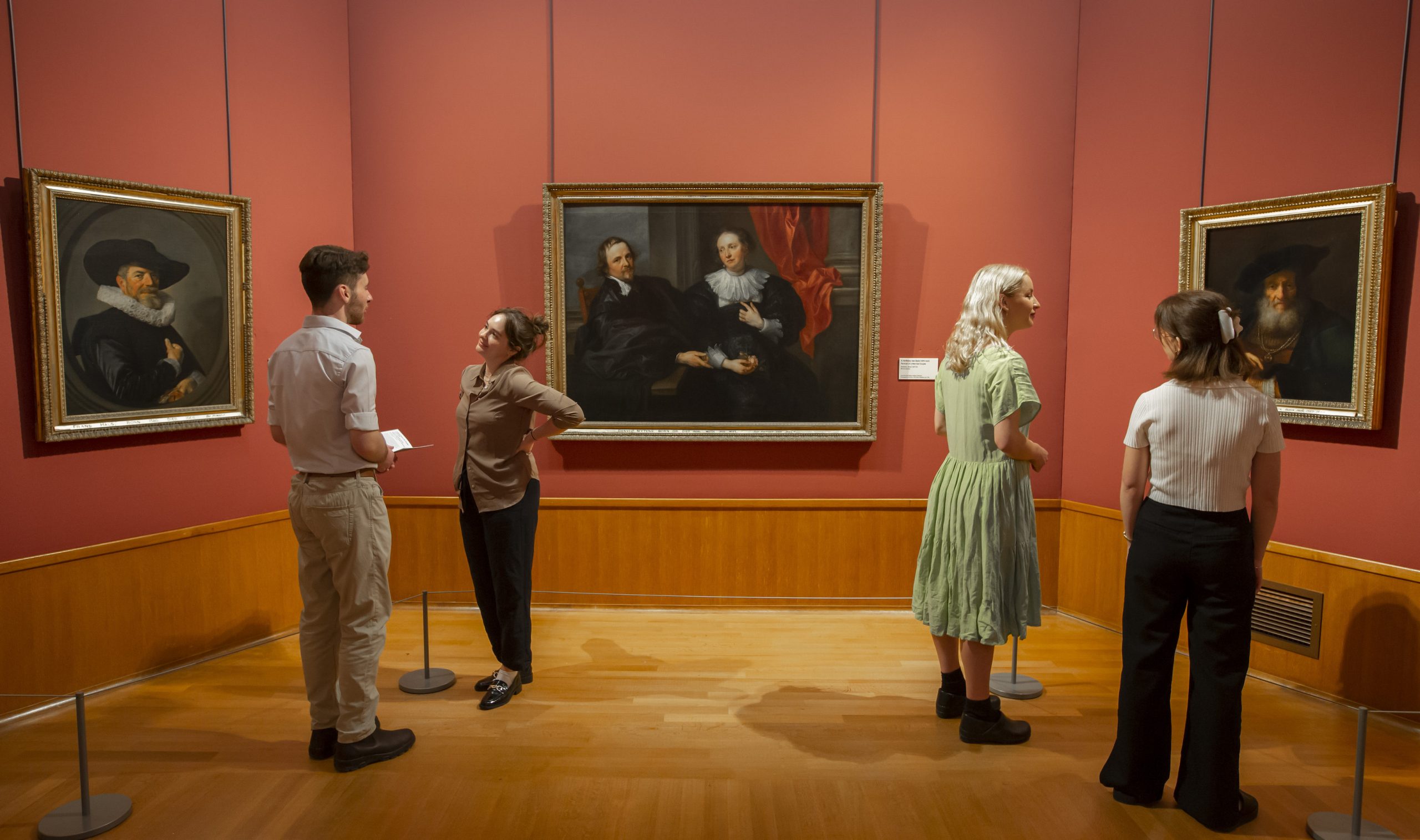
Culture writer Louisa Pickard attends the Barber’s annual student-curated exhibition, praising the show’s interdisciplinary approach to presenting the crucial artistic developments that took place within the Dutch art market during the 17th century.
At the University of Birmingham, we are privileged with the relatively unique opportunity to visit our very own art gallery on campus: the Barber Institute of Fine Arts. Boasting a wealth of European works of art from Monet to Botticelli, the gallery also hosts visiting exhibitions throughout the year. Annually, this includes an exhibition curated by students studying Art History and Curating MA at the university itself. As an exciting opportunity for these hopeful curators, it was equally exciting for me as a young arts student to visit the preview of this year’s student exhibition: Mastering the Market.
With a sequence of twelve paintings loaned from Woburn Abbey in Bedfordshire, and complemented by several of the Barber’s own pieces, this exhibition took an artistic and historical journey through the competitive Dutch art markets of the 17th century. During an opening talk by the four MA students, they shared their curating experiences and the story behind this exhibition. As the largest exhibition of such master paintings since the 1950s, the University is fortunate to be the first institution to host these magnificent works. The selection ranged from pieces painted during the newly formed Dutch Republic to artists working within the Spanish Netherlands. The students were keen to emphasise the historical narrative that such works hereby told, in reflecting the shifting trends within a thriving, competitive art market. Moreover, having been collected by French and English aristocrats, they demonstrated the taste and trends of the 19th century. Having foregrounded this information, the students demonstrated that the gallery was more than a series of paintings but a narrative of European artistic expression, consumption and competition.
The students demonstrated that the gallery was more than a series of paintings but a narrative of European artistic expression, consumption and competition
We were then given a chance to preview these very works themselves. Hanging in the Barber’s Red Room, the paintings were mounted onto a deep maroon wall, spaced according to size and ranging in subject, mood and theme. The red background itself was striking, with many of the paintings featuring darker subjects such as Frans Hals’ Portrait of a man holding a skull. With the unidentified subject staring broodily into the distance whilst holding a skull, in a Hamletian manner, the rich colour contrast was arresting. Similarly, such bold colour contrast was seen in what the students titled the ‘star of the collection’: Portrait of a bearded old man by Rembrandt. Painted during the height of his career, Rembrandt’s careful detail in depicting the elderly subject was startlingly lifelike.
I, however, found myself drawn to the two sole landscapes by Jan Asselijn and Aelbert Cuyp, framing the beginning and end of the exhibition
I, however, found myself drawn to the two sole landscapes by Jan Asselijn and Aelbert Cuyp, framing the beginning and end of the exhibition. With a softer colour palette of blues and greens depicting sweeping hills, rivers, and pastures these two works explored a further aspect of the Dutch art vogue; the countryside. Unlike the more intense portraiture and claustrophobic domestic scenes, these beautifully complimented the other works in foregrounding an alternative narrative to the increasing demand for paintings of status or subversion: the simplicity of rural life during a world of pace, trade and commerce.
Having spoken to the students individually, it was a delight to be part of this preview and to witness the product of their hard work. The ability to ask them questions on the paintings was wonderful, as was reading the accompanying essays and exhibit booklet which are accessible to anybody visiting throughout this summer. With such a unique collection right on our doorstep, I would wholeheartedly recommend visiting this insightful exhibition. Featuring some magnificent works and foregrounding a social narrative, it offers something for not only lovers of art, but of history, culture, politics, geography, and sociology: there really is something for everyone.
Liked this? Read more from Redbrick Culture below!
Favourite Summer Reads: Culture Writer’s Top Picks

Comments